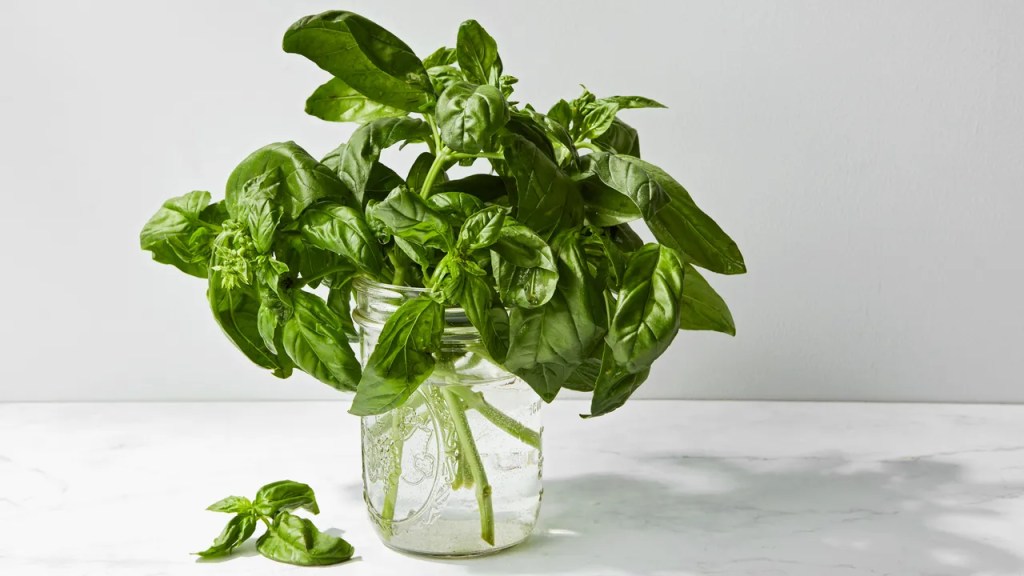
I pride myself on my pesto-making abilities. Even when the fridge looks bare and I’m down to my last handful of nuts, I still somehow manage to whip up a rich, herbaceous sauce that perfectly coats every last piece of pasta. It’s a skill refined by years of allowing basil to wilt before I can use it all, rendering it all but useless save for a trip to the food processor.
But there’s only so much pesto one person can handle, and if that bouquet from the market would last a few days longer, maybe I could break out of this repetitive cycle and dabble in some stir-fries and springy salads. So I spoke with Jenn Frymark, chief greenhouse officer at Gotham Greens, Jerry Bradley, assistant production manager at Square Roots, and Susan MacIsaac, SVP Agscience at Bowery Farming, about where and how to store fresh basil—and yes, I’ve been doing it all wrong.
Should I refrigerate store-bought basil?
Unlike most soft-stemmed, leafy herbs, which should be washed, patted dry, and placed in a glass of water in the fridge, fresh basil should not be stored in the refrigerator (oops). The exception is if it’s stored in a wine fridge, which is warmer than a standard fridge. This is because herbs like parsley, cilantro, and chives are cool weather crops (meaning they thrive in cooler temperatures), whereas basil is a warm weather crop that prefers warmer temperatures both on and off the plant.
“Storing basil in your regular fridge may cause it to turn black prematurely,” says Frymark. “[Instead], packaged basil should be kept on the kitchen counter away from direct sunlight or other sources of heat.”
If the stems are long enough, you can put them in a glass with some water to extend their freshness, which makes an attractive mini bouquet that smells divine, says Bradley. (No need to cover the jar, as is often recommended). If the basil is mostly leaves, store them loosely in a plastic bag on the counter.
“It doesn’t need to be airtight as the leaves of fresh basil will release water, which can make the leaves go bad faster,” she says.
Avoid over-handling the basil, which can bruise the leaves and limit their shelf life, MacIsaac says. For this reason, she doesn’t recommend rinsing or trimming the basil before storing.
Planning on cooking with Thai basil, or purple basil? Follow the same advice, says Frymark. All basil varieties generally follow the same storage rules.
Photo by Chelsea Kyle, Food Styling by Kat Boytsova
What about homegrown basil?
Homegrown basil plants thrive in sunlight and heat, Frymark says. Keep them in a spot with plenty of sunshine, like a sunny windowsill or a countertop near a window. The basil can be harvested immediately before use, so you don’t need to worry about premature wilting. If you do need to harvest a few leaves earlier, treat them the same way you would store-bought.
What to do with wilting basil
Basil will last in your kitchen for about 9 to 12 days after it’s been harvested, Frymark says. When it does start to droop? Make basil oil, says Mark Diacono, food writer, garden designer, and author of Herb: A Cook’s Companion.




